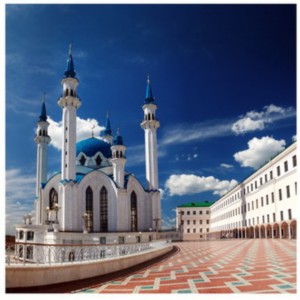|
| ||||
|
|
||||
|
| ||||
|
The Symbol of Kazan
The Kazan Kremlin reminds us of the role The Kazan Kremlin has seen various changes and has always played the central *role in the region. In the 10th century it was a small settlement. Its military and commercial role was developed from the 10th to the mid-13th century, when it became a fort. From the 13th century the Kremlin became the centre of the It remained politically independent until 1552 when Ivan the Terrible recaptured The Kazan Kremlin is unique because historically and architecturally it continually discovers the historl, the interchange of values between sevteraLy ltures and civilizations. The Kazan KjHnlin is not the only ancient urbaodbrhe bank of the It is an example of the synthesis of Tatar and Russian architecture. It combines various styles and historical epochs. Inside the Kremlin complex we can clearly see the influences of Volga Nowadays the Kazan Kremlin symbolizes the nation's history, its culture and traditions. In the course of many years Russian and Tatar cultures developed side by side. This can be easily seen in the Kazan Kremlin. Magnificent golden crosses of the Annunciation Cathedral harmonize with ornate minarets of Kul-Sharif Mosque. In 2000 the Kazan Kremlin became a | ||||
|
| ||||
| Сайт создан по технологии «Конструктор сайтов e-Publish» | ||||


